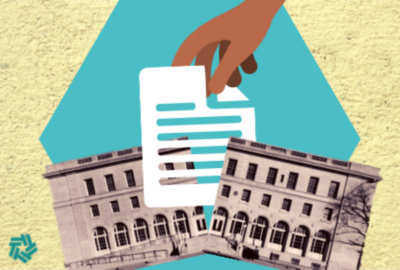$158.4M facelift gives American History Museum new outlook
At age 50, the National Museum of American History is getting a $158.4 million facelift to its west wing, which will add new exhibit space and more interactive...
Age 50 is a good point to consider a facelift. A little nip here, a little tuck there, and you’ve got a whole new outlook.
2014 marks the 50th anniversary of the National Museum of American History (NMAH). The grand dame of the Smithsonian’s museums was pretty hot stuff when it first opened its doors in 1964 on the National Mall.
“It really opened as a revolutionary museum because it was Modernist and it was to be a machine of exhibitry,” said John L. Gray, NMAH director. “And so, it was then created to be the ultimate way in which exhibitions were operated. Wonderful designers were hired. It was pretty extraordinary 50 years ago.”
Fast forward to today and NMAH is in the middle of a $158.4 million renovation that will add new exhibition space and update the building’s infrastructure. It will also give the museum a new focus on American culture and democracy and examine the role business has played in our history.
On Sept. 10, Gray and NMAH staff members walked a group of journalists through the three floors of the museum’s west wing, which has been closed to the public for more than a year.

“Museums are constantly inventing themselves and trying to understand what to do,” Gray said. “And particularly in a nation where history is not the most important thing in people’s lives, we have to make it absolutely relate to all of our visitors’ lives. And that’s exactly what we’re trying to do by making it interactive, interesting. It’s really a multiplex, in many ways, of what American history can be.”
Exploring the impact of the marketplace
The first floor of the west wing, which will open to the public on July 4, 2015, focuses the story of American business through four themes — innovation, opportunity, competition and common good. These themes will play out over four eras in American history — the merchant period (1770s-1850s), the corporate period (1860s-1930s), the consumer period (1940s-1970s) and global period (1980s-present).
The NMAH’s first exhibit to have a business-focus will contain 600 objects and a special interactive gallery, where people can learn through play.
Gray admitted that some people might find a business-themed history exhibit as off-putting. But he sees understanding the back story of the marketplace and its impact on every day life as critical to understanding the American story.
“We’re quite confident this exhibition will give them this broad understanding of the history of the country, really looking at the notion of business, why we value it and how it’s affected their lives,” he said.
Exhibits on the second floor, which opens in 2016, will focus on themes around American Democracy.
“It answers the question, ‘How does a people govern themselves when they’ve decided they’re not going to have a king?'” Gray said.
To flesh out the second floor exhibits, the museum will draw on its extensive collection of political artifacts from American history. The new exhibits will work in concert with NMAH’s already popular “The First Ladies” and “The American Presidency: A Glorious Burden” exhibits.
“This whole program on democracy is about the engagement of people and the process for rights to vote, rights to live and expansion of the way America operates,” Gray said. “It’s going to be an extraordinary exhibition.”
Telling the complicated story of who we are
One of the new exhibits on democracy will also try to tell the complicated story of the American identity. It will focus on the people who were already in America when the colonists arrived, the people who came to start a new country and those who were brought here against their will. The exhibit will relate how those diverse groups came together to form America.
“It’s totally brand new,” Gray said. “It’s new conceptually. It’s a lot of new artifacts. It’s new the way in which the exhibit process works. It’s new in the way in which we built in the programming. It’s really a way to have American history become vital and alive.”
The renovated third floor, which is due to open in 2017, will focus on American culture. The floor will be divided up into three sections. The first will be an exhibition space that chronicles multiple stories of American culture as it develops through history to present day.
Opposite of the exhibition space will be a gallery dedicated to rotating exhibitions.
“Anchoring this is our Great Music Hall, which will feature the extraordinary collection of early instruments and our Chamber Society, our Masterworks Jazz Orchestra and our roots music program,” Gray said. “Because, we actually have a living collection in music and it will see its light in the Music Hall there that is acoustically perfect.”
He added the hall’s design provides a perfect performance space for non-amplified music, so that audiences can experience the music in the way it was originally created.
Video courtesy of the National Museum of American History
Key to all of the new exhibitions in the west wing is that each will be rich in artifacts.
“We have the nation’s greatest collection of American history, well over 3 million objects and we need to show those,” Gray said.
However, he acknowledged that technology has altered the expectations of museum visitors, who want to be able to interact more with the Smithsonian’s exhibitions.
“We have to take great advantage of technology in here, both because it helps us expand the story of American History, but it’s also what our visitors expect,” Gray said. “And so, throughout the galleries, there’ll be an enormous amount of interactivity, which is almost a given in any museum, but there’s also multiple forums for media of all kinds that will happen in here.”
Interactivity may mean presentations by museum staff, objects visitors can handle or live performances by artists.
“You take the authenticity of the objects, the stories told around the objects, you couple that with actual programs around the objects and you have a very live, active program around American culture,” Gray said.
RELATED STORIES:
From ruby slippers to first ladies’ gowns, American History Museum celebrates major milestone
Navy finds hidden treasure from Spanish-American War
Copyright © 2024 Federal News Network. All rights reserved. This website is not intended for users located within the European Economic Area.
Michael O’Connell is senior digital editor of Federal News Network optimizing content for the best user experience. Follow @moconnellWFED
Follow @moconnellWFED






